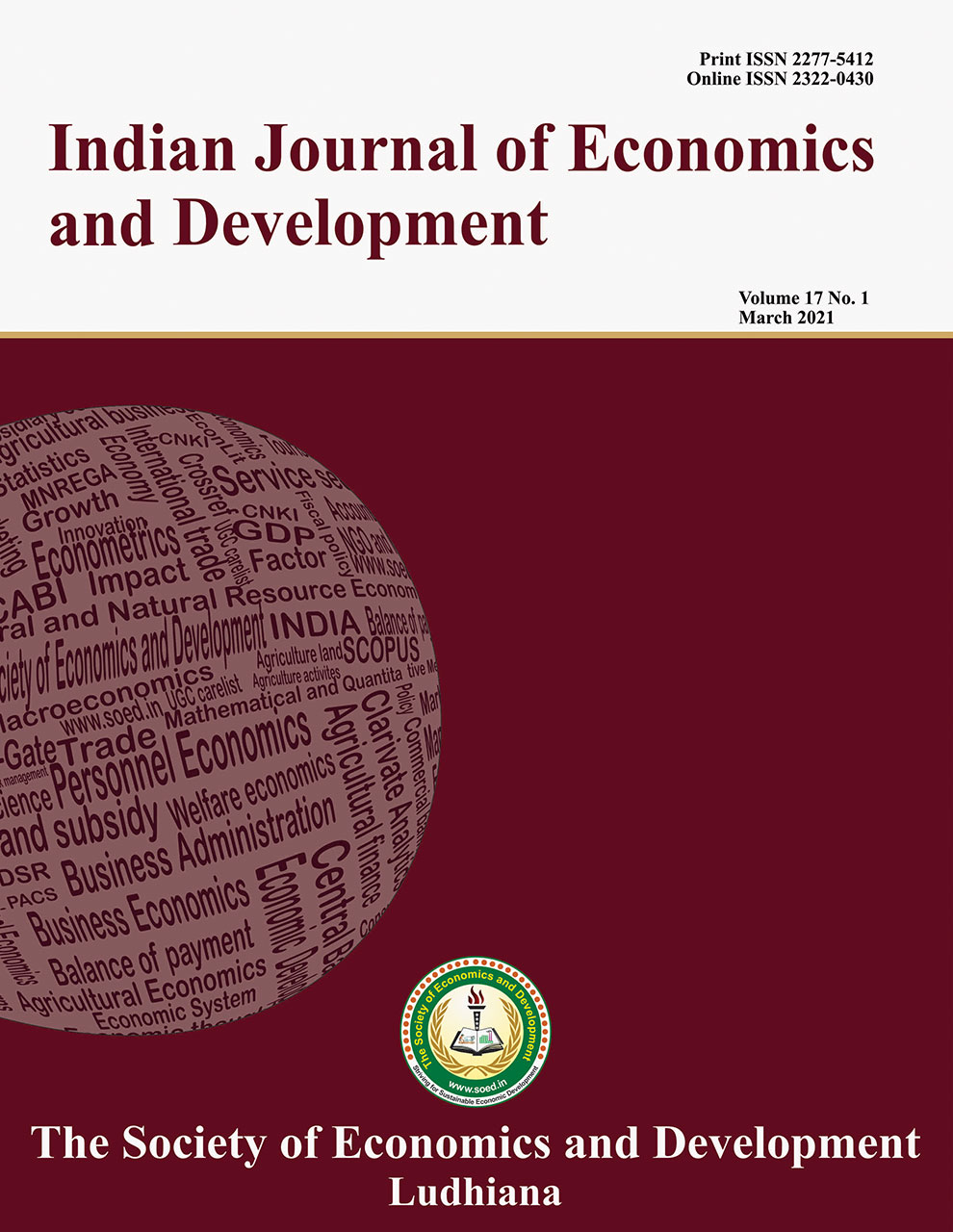Levels of Living of Woman Labour Households in Rural Punjab: An Empirical Study

Price: ₹ 1000
Author: Dharampal1, Gian Singh2, Veerpal Kaur3, Jyoti4, and Gurinder Kaur5
Author Address: 1&4Assistant Professor, Department of Economics, GGDSD College, Kheri Gurna-140 417 (Banur), 2Former Professor, Department of Economics, and 5Professor, Department of Geography, Punjabi University, Patiala-147 002, 3Assistant Professor, Department of Econ
Keywords: Average propensity to consume, consumption expenditure, income, indebtedness, levels of living.
JEL Codes: E21, E26, R51, O18.
Abstract
Based on primary data collected from 1017 woman labour households spread over the three geographical regions of Punjab, the study brought out that the levels of living of these households were very low. A large majority of the respondents were living in semi-pucca houses and most of their houses were in dilapidated condition. The woman labour households, on an average, earned `77198.48, and spent `85621.77 annually in the rural areas of Punjab. Out of the total consumption expenditure, 57.34 percent was spent on non-durable items. Because of the excess of consumption expenditure over the household income, the average propensity to consume worked out to be 1.11 for an average woman labour household. As a result, an average household in the sample incurred a deficit. The study revealed that a large majority (93.71 percent)of the woman labour households were under debt. The average amount of debt per household was recorded at `53916.45. The estimated value of their household assets worked out to be `132386.26 out of which 62.93 percent was only shared by the dwelling houses. To improve the economic conditions of woman labour households, the central and state governments must take strong initiatives for creating sufficient employment opportunities and should effectively implement the policies meant for them.
Description
Indian Journal of Economics and Development
Volume 16 No. 2, 2020, 229-238
DOI: https://doi.org/10.35716/IJED/19095
Indexed in Clarivate Analytics (ESCI) of WoS
Dharampal1, Gian Singh2, Veerpal Kaur3, Jyoti4, and Gurinder Kaur5
1&4Assistant Professor, Department of Economics, GGDSD College, Kheri Gurna-140 417 (Banur), 2Former Professor, Department of Economics, and 5Professor, Department of Geography, Punjabi University, Patiala-147 002, 3Assistant Professor, Department of Economics, University College, Ghudda-151 401 (Bathinda)
Corresponding author’s email: dharampaleco@gmail.com



